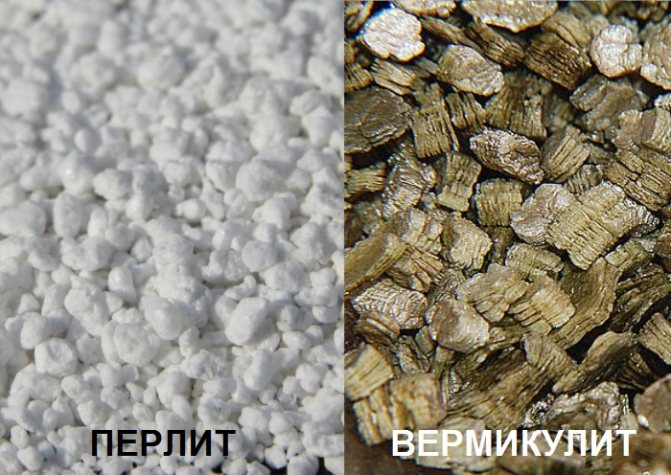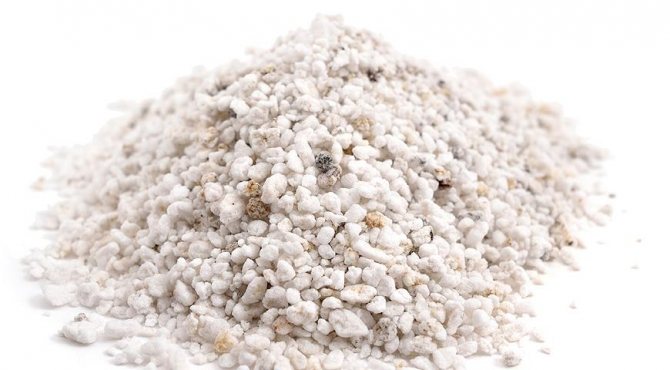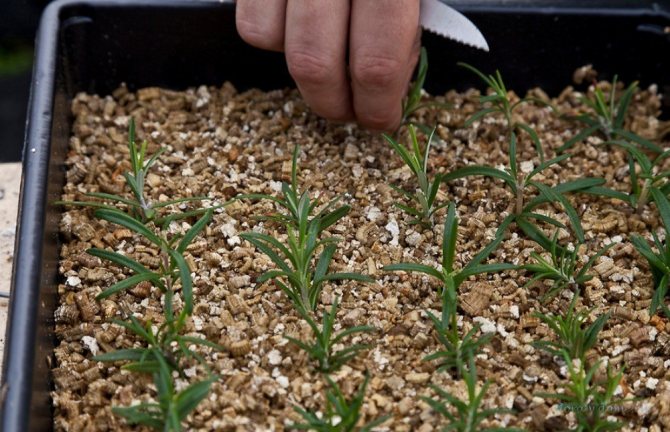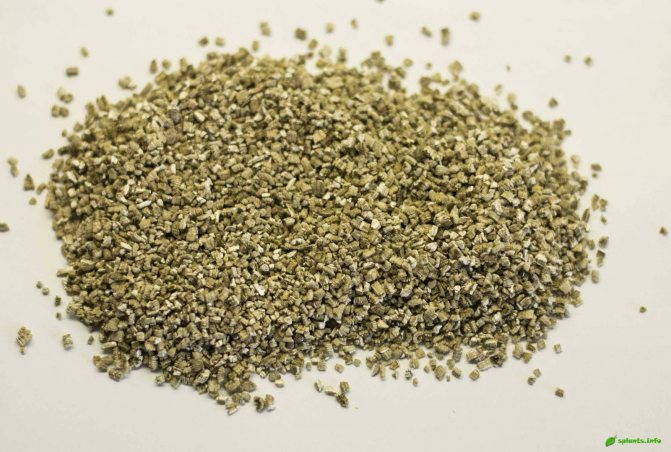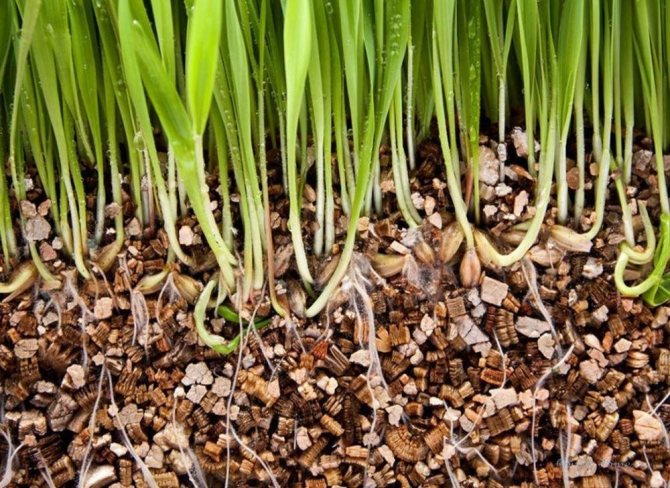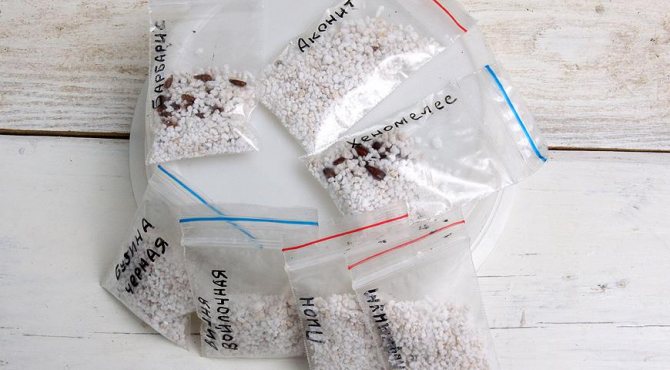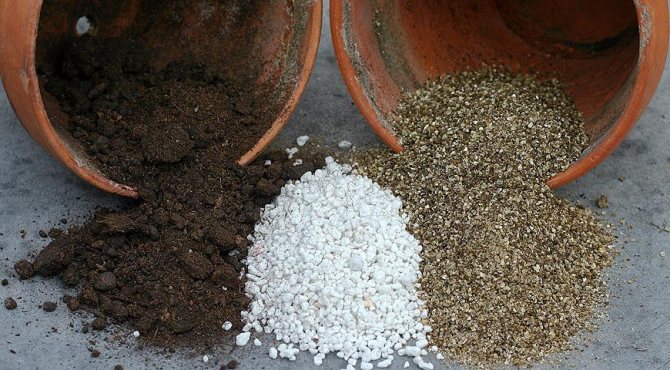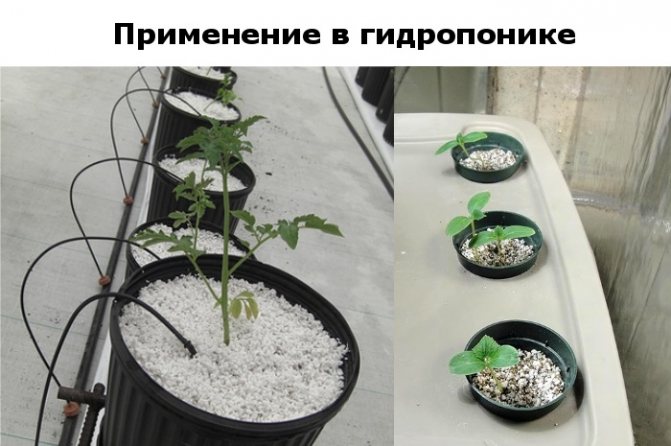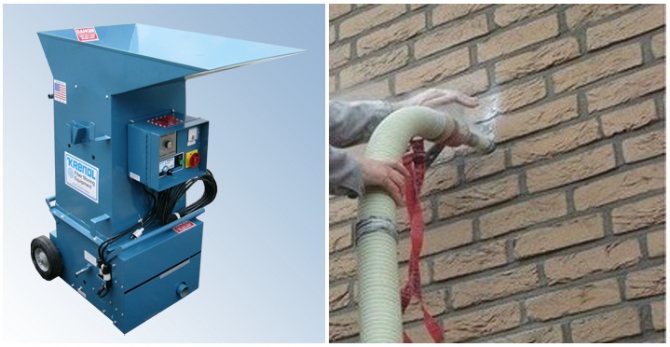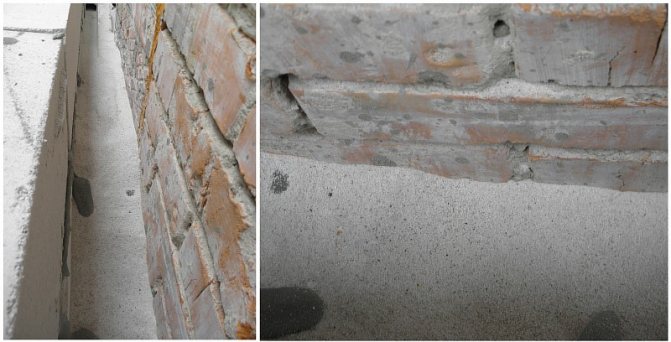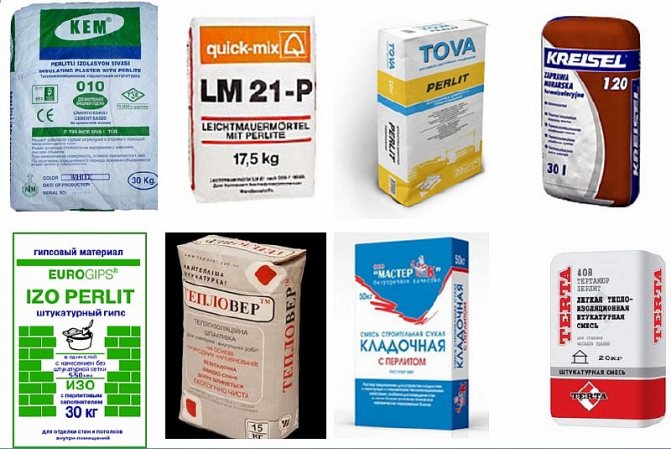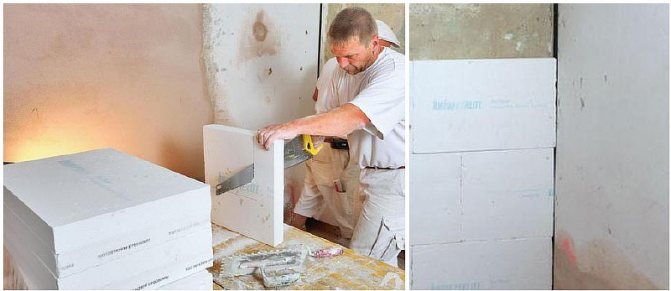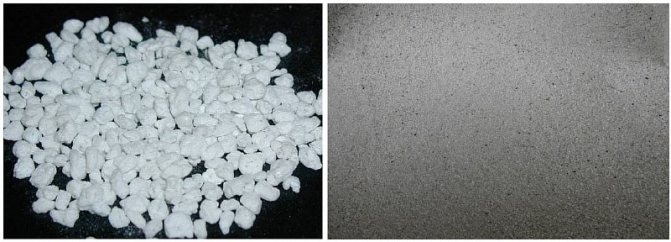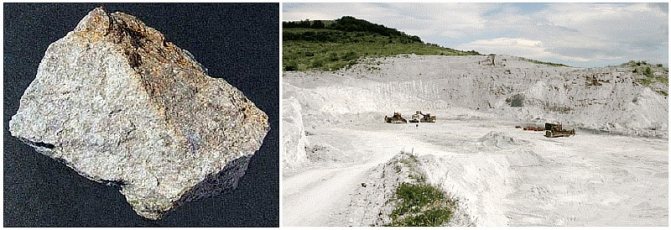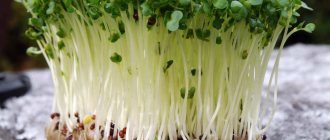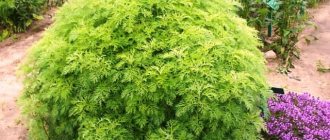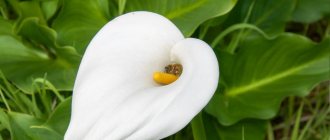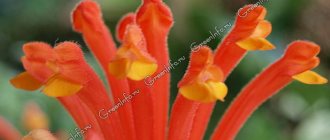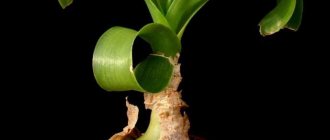What is perlite? This is a volcanic rock, or more precisely, glass of volcanic origin. Its difference from other similar natural materials is that when heated to a specific temperature, it can increase its volume from the initial indicator from 4 to 20 times due to the presence of 2-6% of bound water in it.
When perlite is heated to 870 degrees, it bursts like popcorn. This is due to the fact that during the evaporation of bound water, millions of small bubbles are formed in the soft glazed particles. Thus, it can be argued that perlite, the photo of which will be presented below, is a special form of natural glass, which is classified as chemically inert and has a pH of 7.
Characteristics of perlite or agroperlite
This substance is actively used to loosen the soil, improve its quality characteristics, as well as for moisture and air exchange.
Perlite contributes to the establishment of an air-water balance in the ground, it does not cake and does not compact, and the earthen lump in the pots of indoor plants is breathable.
What is agroperlite? It is a perlite rock, expanded with the help of a special production technology. It is used for plants.
Thanks to agroperlite, indoor flowers provide excellent drainage, the roots are more evenly distributed over the inner volume of the pot, and the soil is aerated. Plants begin to develop much more actively and bloom more abundantly, receiving sufficient oxygen.
When watering, this substance is able to actively absorb moisture, while its mass increases by 4 times. Subsequently, he will give it to the root system of plants in small portions. Particles that have given water to flowers begin to gradually take it from other granules filled with liquid.
If the top layer of the substrate suddenly dries up in the pot, a hard film will never appear on it, which will prevent the access of oxygen or water. Perlite will pull the liquid out from below to provide it to the roots on the surface.
Substance properties
The reflective property of perlite is very important for plants, contributing to their good development. Since it is located in the top layer of the soil, it contributes to the reflection of ultraviolet rays on the back of the flower leaves.
Thanks to this, the soil does not overheat, and the roots are well protected from drying out, while maintaining a stable temperature regime.
If heat and moisture in an earthen coma move freely and quickly, then such indicators begin to spread evenly throughout the entire volume of the container.
The heat-conducting properties of the soil directly depend on the density. The smaller it is, the worse is the movement of energy. The loose earth not only heats up slowly, but also gradually cools down, which contributes to the safety of the root system from overheating and freezing.
Agroperlite properties
Agroperlite is a natural material that is processed in special ovens at high temperatures (over 1200 ° C). During the heating process, it swells and swells similarly to popcorn.
Its appearance depends on the size of the granules. It looks like crushed stone or fine grains.Agroperlite has the following properties:
- soundproofing and thermal insulation;
- durability;
- environmental friendliness;
- fire resistance (more than 850 ° C);
- good absorbency;
- resistance to decay, microorganisms, rodents.
This material is well suited for seedlings, as it requires a large amount of moisture, with a high sensitivity to temperature changes.
Read also: Types and interesting varieties of cyclamen
However, the most popular area in which agroperlite is in demand is still floriculture. It acts as a drainage system, preventing the outer layer of soil from drying out. All this is due to the fact that perlite accumulates moisture and subsequently gives it to the soil.
Advantages and disadvantages
Why is this volcanic material so good? Here are its main advantages:
- This is a completely clean and sterile material from a biological point of view, free of microorganisms.
- It is very light and is often used as a substitute for sand for plants with weakened root systems.
- Perlite retains moisture remarkably and transfers it evenly to the roots.
- Since, unlike sand, this material does not cake, it provides excellent moisture and air permeability. The surface of the soil containing perlite will never be covered with a hard crust.
- Due to the insulating properties of perlite, the root system of plants does not cool or overheat.
It is necessary to consider the disadvantages of this material:
- Due to the white color of perlite, you can overlook such pests as root and mealybugs, larvae of mushroom mosquitoes in it.
- If a large amount of this material is required, it is best to purchase its cheap counterparts.
- Since the substance has a neutral pH, when a flower is grown in pure perlite, there is a possibility of oversaturation of the soil with alkali, which stops the plant's normal access to nutrients, which negatively affects it.
When working with this substance, you should protect your mouth and eyes from getting into them small particles of this substance.
It is recommended to moisten it with water from a spray bottle, as well as rinse it through a fine sieve without immersion in water. Wet perlite will not be able to rise and will not absorb all the moisture. Work should be done in a respirator. If dust gets into your eyes, rinse them thoroughly.
The type of perlite and its use for plants
For germinating seeds and rooting cuttings. Perlite is an excellent material for this purpose.
It is best to root cuttings of hydrangeas, azaleas and other capricious plants that require constant but moderate humidity in it. You can safely sprinkle them with seeds that are not sprinkled in ordinary soil.
For air humidification and drainage. Perlite is a first class drainage system. But the fine fraction of the granules allows it to be used mainly for small pots.
For plants that need high air humidity, it is used as a humidifier: it is poured into a pallet, moistened with water and a pot is placed on it. Perlite is also used as a mulch for garden and indoor plants.
Use for air exchange. Since plants are able not only to absorb, but also to excrete various products, they need air exchange for the formation of roots.
Thanks to its special structure, perlite helps to save free spaces that are filled with air and water. This allows the cuttings to not rot in such material, unlike water or soil.
How else can you use perlite?
To reduce the risk of seedling disease, perlite is often combined with the following substances:
- vermiculite;
- priming;
- sand;
- sphagnum moss;
- peat.
Since perlite is not a nutrient medium, additional nutrient solutions and organic fertilizers are required to create a useful microflora in such a composition.
It is good to soak seeds for germination in such material, mulch when growing seedlings so that the soil remains moist for as long as possible.
Germination of light-sensitive seeds, which are not recommended to be covered with soil, can be covered with perlite. It is able to transmit a small part of the sun's rays, therefore it is used as a substrate for plants with a shallow root system. These are mainly orchid and bromeliad epiphytes.
This material is used as drainage for small flower pots and for mulching to prevent overheating of the soil. The porous structure of perlite is ideal for large plants grown in large containers. Due to its low weight, their transportation is much easier.
Thus, perlite, the photo of which is presented in the article, is a wonderful material for plants. It is used even for very capricious flowers. It is especially valuable because it is able to retain moisture, after which it gradually gives it to the root system, protecting it from drying out.
- Olga Alexandrovna Uglova
Tips from experienced growers
How much agroperlite to add to the substrate depends on the purpose of its use. So, for rooting cuttings, germinating seeds and growing seedlings with their subsequent transplantation to the street, it is better to add it to peat soil in a 1: 1 ratio. Greenhouses also use a mixture of peat and perlite in equal proportions with the addition of sand in a final ratio of 2: 2: 1.
To loosen and improve the properties of the soil, expanded perlite of medium and small fractions is mixed in half with the ground and laid half a meter deep. For too depleted soil, three parts of a mineral supplement are taken for one part of the land.
- As a substrate, agroperlite is well suited for growing strawberries and blueberries using the hydroponic method. Saplings take root well in such a substrate, since its use prevents waterlogging of the root system and the appearance of rot on it.
- Stratification in perlite or in its mixture with peat and sphagnum is a great way to bring seeds out of their dormant state and prepare them for sowing. Before the process, the seeds must be soaked. The terms, depending on the variety, can vary from several hours to several days. Then stratification in both cases is carried out according to the generally accepted scheme.
- Seedlings of peppers, cabbage, tomatoes and eggplants will feel better if perlite is added to the growing substrate instead of sand.
- For rooting of grape and pelargonium cuttings in perlite, it must first be moistened. Then a container with cuttings deepened by 7-10 cm is placed in a dark and dry place until the root threads appear.
- For petunias and most garden flowers, perlite is used as a loosening agent. To create the most favorable conditions, the flower additive should be taken in the smallest fractions.
- Agroperlite is an ideal material for roses, or rather for rooting them. It is better to do this in the fall, when the flowering ends. To get a ready-made planting stalk, you need to remove the lower leaves and cut the upper ones in half. Cut the stem from the bottom obliquely and place it in a solution of a root formation stimulator for a day. Then place in a moistened substrate until roots appear.
- For indoor plants, perlite is often used as a drainage layer. A large fraction (it can be mixed with expanded clay) is poured onto the bottom of the pot with a layer 3-4 cm thick. On top of the mineral, the soil necessary for this plant is placed.
- Most soils are not suitable for both succulents and cacti, due to the inability to pass moisture through themselves. Adding a loosening agent to the soil will help increase its moisture holding capacity and aeration and maintain optimal conditions for growing such plants.
- Good soil aeration is important for violets. It allows their root system to breathe freely and prevents it from decay. The leavening additives help grow healthy and abundantly flowering bushes. For violets, they are used not only when planting seedlings, but also when rooting leaves. Transplanting seedlings into the ground is carried out when the roots grow long and strong enough.
- For orchids, you need a loose, breathable and moisture-absorbing substrate. The peculiarities of the root system do not allow orchids to develop normally if they are planted in ordinary soil. Therefore, perlite (or similar leavening agents) are essential for orchids. It can also be used as the main soil (hydroponics) if the flower aristocrat needs to revive the root system.
- The introduction of agroperlite into the soil before planting a lawn or garden flowers or in the fall into the ground before digging it prevents waterlogging.

The shelf life of perlite is not limited. In addition, it can be used repeatedly, without loss of quality, after rinsing with plain soft water. Complete destruction of agroperlite grains (fraction 5 mm) occurs 3-4 years after application with repeated digging and loosening.
Vermiculite - what is it, what is it for?
It is a lamellar material of golden brown or silver color, in fact it is hydromica. The name itself comes from the Latin word vermiculus, which means "worm". If the vermiculite is heated, then its plates will become thread-like granules, something like "worms". The porous structure of this material acts like a sponge, absorbs, retains moisture, the volume of which exceeds its own weight by 4 times. Thanks to this quality, vermiculite is simply an irreplaceable additive to soil mixtures, for a long time it retains the moisture content of the soil (closer to the roots), all its useful substances.
Vermiculite - what is it? It is a chemically inert mineral that does not contain toxic substances, heavy metals. This material is environmentally friendly, does not decompose, does not rot, and is neutral to acids and alkalis. It contains valuable components that have a beneficial effect on the growth and development of green crops - calcium, magnesium, silicon, potassium, aluminum, iron. The components of vermiculite are partially absorbed by the plant as needed, but as the main fertilizer it is not suitable (chemically inert). The material improves soil aeration, can change its pH level (alkalize), maintains soil moisture, thereby increasing the time between waterings.
Vermiculite for plants - how to apply? When growing plants, agrovermiculite is most often used, processed in a special way (firing), intended specifically for floriculture and horticulture.
I found a video clip on the Internet in which the author shares his experience of growing potatoes using vermiculite:
Agrovermiculite, photo:
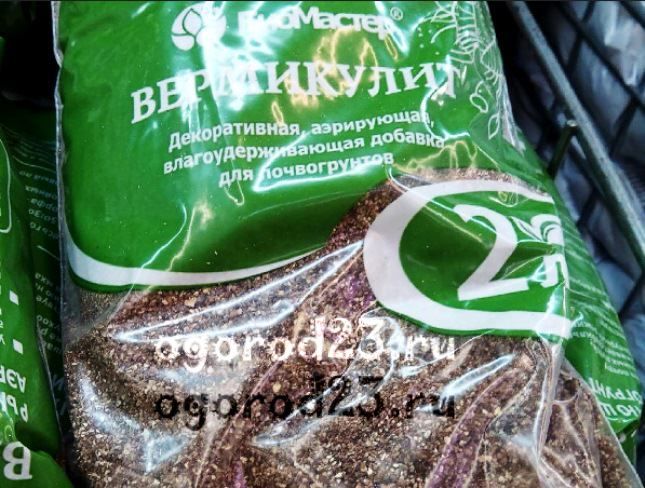

In addition to retaining moisture, vermiculite is able to retain the components of top dressing, fertilizers, which also contains the prepared soil. It is mixed with peat, sphagnum, a variety of earthen mixtures, substrates. Pure, undiluted material is widely used for rooting shoots, seeds are also very convenient to germinate in this way. Another big plus of this supplement is the lack of a favorable environment for fungi or mold.
Vermiculite for plants can also be used as drainage, while taking its larger fraction (KVV-8, KVV-4).It is added to the soil in any proportions, thus, it becomes looser, does not cake, does not form a crust on top. If you are planting seedlings in the garden, then half a glass-glass of vermiculite can be introduced into the depths of each hole. When planting young trees, feel free to add 2 or 3 liters of this substance to the planting hole.
What is vermiculite? It is a material with neutral acidity that can lower the pH of the soil mix. Great for storing tubers or flower bulbs - they will not rot, mold, and temperature extremes. It has the ability to extract from the soil, bind mineral compounds, and then gradually release them, give to the plant. When adding vermiculite to potting mixes, be sure to take into account the peculiarities of the flower.
For example, for cacti or certain types of succulents, this additive is not suitable, since they do not want high humidity. As a soil loosening agent, perlite is optimal for drought-resistant green inhabitants.
Recommendations for use
Having a complete understanding of the functions and structure of this mineral, there are several options for its use in indoor and garden floriculture. For example:
- Sowing the smallest seeds. When mixing a mineral with small seeds, they are more evenly distributed over the container.
- Additive to soil. For plants and flowers with a weak root system, a mixture of soil is used, which is prepared in proportions of 1: 1: 1 - peat or humus, black soil, perlite.
- As a drainage. Vermiculite is poured into the bottom of the pot in layers no more than 5 cm thick.
- Air humidification for tropical plants. In the immediate vicinity of the pots with tropical plants, pallets with wet perlite are placed (for this, it must be soaked beforehand).
- Fertilizer base. The mineral is soaked with fertilizers diluted in water, then sprinkled on the soil in the immediate vicinity of the plant. It releases moisture into the soil along with fertilizer.
- Rooting process. Used for plants that do not grow well in normal soil. To do this, use a pure mineral, previously soaked in water. When using it, rotting of a young root system is completely excluded, since it does not contain absolutely any microorganisms (biologically sterile).
- As multi. Place the mineral in the plant pot and cover the outside of the soil with it. It will not allow it to dry out and harden, while it will not interfere with the flow of air to the roots of the plant.
When working with perlite, it is necessary to protect the eyes and respiratory tract, as it may contain sand among particles of various sizes, which, when inhaled, settles in the lungs, and its dust is harmful to eyes.
Perlite - what is it?
It is a volcanic rock formed by hydration. Obsidian hydroxide is perlite, initially it can have a different shade (brown, black or even green). After special processing, the material becomes white, porous, it is crushed, used as an additive to potting mixes. Perlite promotes an even distribution of moisture in the soil, is an ideal component for hydroponic growing of plants, and loosens the soil well.
Perlite - what is it? It is a sterile substance without impurities, resembling sand in its properties (the main component is silicon dioxide). With its help, you can root cuttings, grow seedlings, use it as an additive to various substrates. It improves the aeration of the soil, optimizes its drainage and water-holding properties.
Perlite is very dusty, so when working with it, be sure to wear a protective mask. When inhaled, microparticles of glass dust enter the body, but are not subsequently excreted from it - remember this.
Agro perlite, photo:
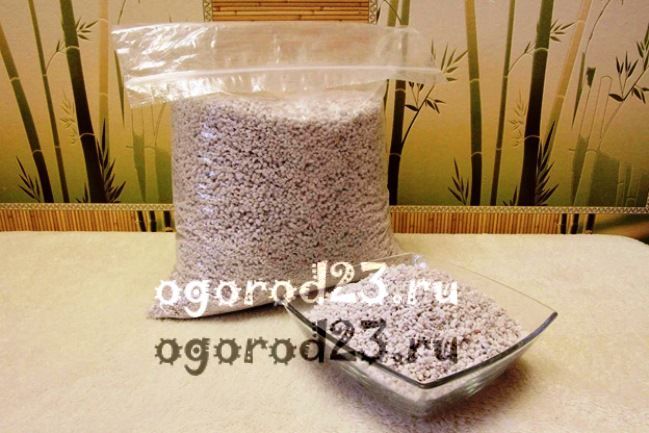

Like vermiculite, this material improves the soil structure, retains moisture, and prevents the formation of a crust on the upper layer of the soil. The addition of perlite can increase the aeration of heavy soils, as well as increase the water-holding qualities of light soils. It reduces the level of soil acidity, slows down its salinization, and prevents waterlogging during prolonged rains.
If suddenly you overdo it with fertilizers, then perlite will absorb them, and then gradually give them to the soil.
After three or four years, the perlite granules are destroyed, digging, loosening only contributes to this.
Perlite for plants - how to apply? Its presence in the soil is simply irreplaceable for flowers with a weak root system, like sand, perlite loosens the earth, making it light. Strong plants with strong roots also need it, because stagnant moisture can lead to rotting.
For rooting shoots, germinating seedlings, you can use pure material, but mixing with sphagnum or peat also gives excellent results. Summarizing all of the above, we can safely say that these two additives are combined with each other, ideally complement each other's qualities, and have the same effect on soil and plants.
Arugula in perlite, photo:
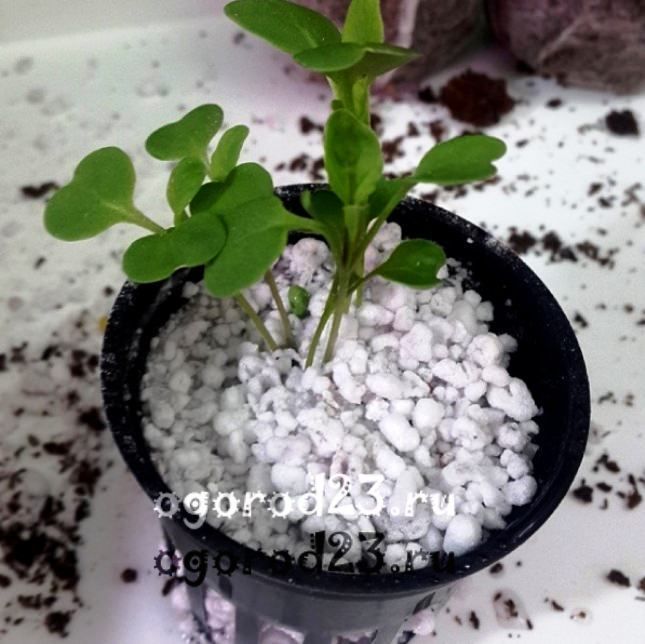

Scope of both additives:
- Can be used as drainage (coarse fraction).
- They are used to cover the top layer of soil - they prevent the formation of mold, the formation of a crust.
- Bulbs, tubers of flowers are poured, they are buried for comfortable storage - this is reliable thermal insulation, protection from decay.
- Wet vermiculite or perlite is an ideal substance for germinating seeds, for the formation of roots in cut shoots.
- A mixture of both materials (equal proportions) is used in hydroponics.
- The pH level of both additives is neutral - this should be taken into account when preparing potting mixes for plants with specific soil requirements.
The combination of these two materials creates an optimal environment for the development, growth of your plants, both in pure form and in soil mixtures.
Vermiculite - shoots of gladioli, photo:
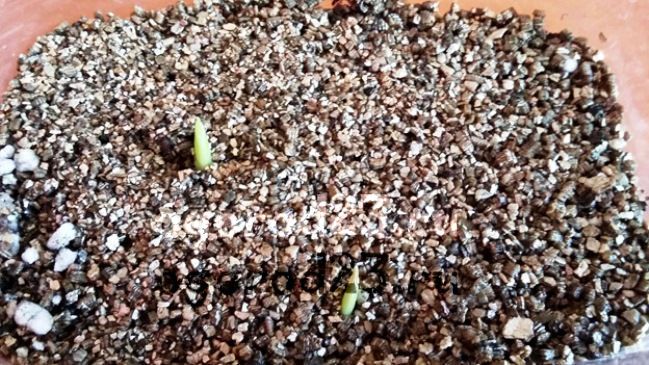

Vermiculite - cucumber shoots, photo:
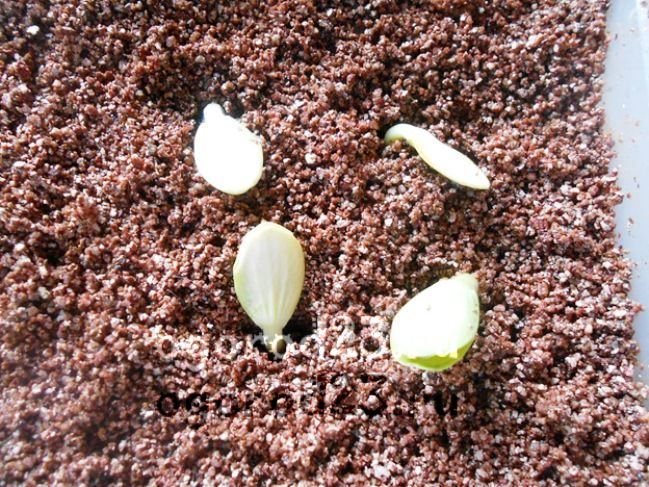

Varieties and areas of application
There are several types of pearlite, and they are used in completely different areas. The most popular types are lamellar and expanded (agroperlite or vermiculite).
Lamellar is used in a wider field, especially in the construction industry. Building materials with added perlite have increased resistance to fire. And also it gives strength and lightness to structures.
Industries of application:
- Housing and communal services. City water supply purification.
- Medicine. It is used to filter medical products.
- Gas and oil production. Due to the high absorbing qualities of perlite, it is used to absorb fuel oil and gasoline, which are subsequently burned out of it.
- Ecology. Used to clean up lands and water bodies affected by industrial production. Expanded perlite works well for this purpose.
Perlite is also used in hookah bars instead of tobacco. It is impregnated with various flavors and propylene glycol. Then they put it in the hookah.
Perlite and vermiculite - what's the difference?
Despite the lightness, flowability of these two materials differ in appearance: perlite is white, dusty, vermiculite is dark in color. There are no nutrients in perlite, and vermiculite contains aluminum, calcium, magnesium, iron, silicon, potassium (in bound form).
Vermiculite, unlike perlite, can absorb beneficial compounds from the soil, and then gradually release them. It is also very water-absorbing compared to perlite.
Perlite is an excellent conductor of moisture, but a poor retainer, while vermiculite, on the contrary, retains it very effectively.Vermiculite has an elastic structure, and perlite collapses and becomes dust with active physical exposure.
Perlite or vermiculite - which is better for plants? This question cannot be answered unequivocally, it cannot be said which material is better, since everything depends on the plant itself, its needs. For example, for some flowers (the same indoor violets or gloxinia), wick watering is sometimes used. In this case, perlite is ideal, which is used to dilute the substrate in the pot - it contributes to an even distribution of moisture over the soil, and the soil itself dries faster. Vermiculite, on the other hand, will be more appropriate with the usual method of irrigation - the soil will stay moist longer due to its moisture-accumulating properties.
It is impossible to determine which is better than perlite or vermiculite, since this or that additive is equally suitable for each type of plant. These two materials are equally good, have similar qualities, but still slightly differ in "technical" characteristics.
They complement each other perfectly, improve the soil. To get the optimal soil mixture, growers take 15% of each material, mix them, while the total additives (relative to the rest of the soil mixture) should be 30%. A mixture of peat, perlite and vermiculite is most commonly used for growing indoor plants. Vermiculite is suitable for delicate, capricious representatives with a vulnerable root system, perlite is more suitable for powerful plants, cacti or succulents.
New opportunities for growing plants are constantly appearing on the market - care products, all kinds of additives. Almost any product can be purchased today. If you are not yet familiar with these materials, pay attention to them. Vermiculite or perlite for plants will save you time in caring for them, eliminate many problems (fungi, mold), improve the composition of the soil, and help keep the planting material in good condition.
Agroperlite: reviews
Most gardeners, florists and gardeners speak positively about this mineral supplement. Most often they buy it as a substrate for rooting cuttings and growing seedlings for open ground, as well as for home floriculture. The reviews note that the quality characteristics of the soil with the introduction of perlite into it are significantly improved. It becomes looser and more moisture-consuming, the frequency of watering decreases, water consumption is saved, plants are less susceptible to disease. This is a great way to grow crops with organic supplements with little effort. And its use in conjunction with similar materials (vermiculite, sphagnum moss) will make this process even more efficient.
Among the disadvantages of using agroperlite, there is a high price, which makes its use in large areas impractical. In these cases, it is better to replace perlite with budget loosening and adsorbing additives, such as vermiculite or zeolite. Many people notice the unscrupulousness of sellers who pass off cheap artificial fakes that are similar in appearance, but do not possess its properties as natural material.
Reviews of gardeners and florists on the use of perlite and vermiculite
The first meeting with agroperlite took place many years ago. I was so impressed by growing plants in soil with perlite. The seedlings have never been so beautiful, strong, without a single elongated or rotting seedling at the root, the soil was well loosened, retained moisture for a long time. I also liked perlite for indoor flowers. In order not to breathe harmful dust from perlite, I immediately add a little water inside the bag. Wet perlite does not produce dust! I advise everyone.Lusia For those who use perlite, I can advise their own way of washing it: before you start washing the perlite (if this happens in the bathroom), turn on a shower with hot water (or very warm) for 3-5 minutes. The created moisture will “nail down” the glass dust of perlite when you open the bag, and will allow you to rinse the perlite without harming your health. But try not to poke your nose into the bag! Pearlite dust is the smallest specks of glass that (when inhaled) settle in your nasopharynx and lungs (if you inhale a lot and sharply). It also irritates the eyes. The actions of perlite (or agroperlite - the essence is the same) are equivalent in terms of the effects of mineral wool (only the skin will not itch). After all, it would never occur to anyone to hug the mineral wool and breathe near it without a "muzzle". I am a builder by education, so I know very well that this perlite is not so safe (so I try to rarely use it, replacing it with similar, but safer leavening agents). I have been using Cassandra Vermiculite for a very long time, I add it to the pots where petunias grow in the country, so that they do not dry out, because I come only on weekends. Recently, I began to add when planting new plants, roses, hydrangeas, so that they take root better, so that the soil retains water. My soil is peaty, so this additive is relevant to me - I like it: again - mineral fertilizing.
- Vermiculite for potatoes
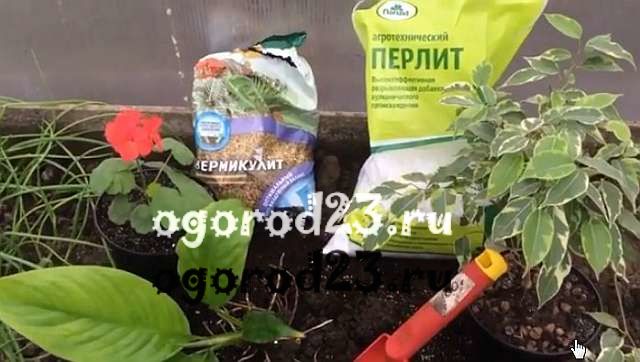

Building mortars
On the basis of expanded perlite, mortars are often made, which are used for laying bricks or other materials. Such solutions are light, strong and warm at the same time. When dry, a brick, cinder block or foam concrete masonry is obtained, which does not have cold bridges. Also, mortars are used to seal various cracks, joints and other irregularities.
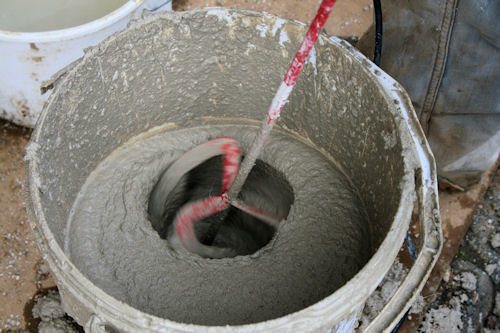

To prepare the dry mix, perlite sand is mixed with gypsum or cement. It is necessary to dilute with water immediately before starting work, since such a building mixture tends to harden quickly.
What is perlite and its characteristics
Perlite is widespread in horticulture and horticulture, so everyone should know what it is. In fact, perlite is one of the volcanic rocks, which is similar in structure and appearance to glass.
Each piece of perlite contains from 2 to 6% of bound water, which is why, during heating, perlite can increase in size by 4, or even 20 times. Perlite, or agroperlite, as it is also called, can also explode. However, this is possible only when heated to 870 ° C.
The chemical composition of pearlite is multicomponent:
- 65-75% - silicon dioxide;
- 10-16% - aluminum oxide;
- up to 5% - potassium oxide:
- up to 4% - sodium oxide;
- up to 3% - iron oxide;
- up to 1% - calcium oxide;
- 2-6% water.
Perlite can also differ in color. Often white or transparent perlite is used in agriculture, but black, red-brown, green and brown are found. The color of perlite does not change its properties and application. Important! Keep in mind that adding white or clear perlite to your plant potting mix will complicate the process of diagnosing the soil for the presence of various pests. In particular, perlite particles can be easily confused with root and mealybugs, as well as mushroom gnat larvae. It will be possible to mark the presence of pests only by the condition of the plant.
Agroperlite: what is it and what is it for
The mineral additive agroperlite is obtained from perlite, a volcanic rock with a characteristic small rounded structure, along which it is divided into separate nucleoli, which outwardly resembles untreated pearls. Hence its name: "perle" in French means "pearl".
Perlite is formed from volcanic glass of obsidian by hydration with groundwater. Obsidian, in turn, is formed at the points of contact of the edge of the lava flow as a result of its rapid cooling in contact with the earth's surface. It is distinguished from other rocks of volcanic origin by the presence (more than 1%) of constitutional (bound) water, which is not present in free form, but is released when heated. The main part of its chemical composition is silicon dioxide (65%) and aluminum oxide (about 16%). It also contains water and oxides K, Na, Fe, Ca, Mg.


Perlites are distinguished by texture and color. Based on textural features, 4 varieties are distinguished: pumiceous, brecciated, massive, banded.
The color of perlite depends on the impurities included in it and can be of different shades of black, green, brown, red-brown, white. By types, perlite is divided into:
- resinous-stone - homogeneous, without impurities;
- spherulite - with feldspar inclusions;
- obsidian - with inclusions of volcanic glass;
- glassy - with inclusions of sand and borax;
- other.
The presence of constitutional water gives perlite the ability to swell when heated above 800 ° C and increase in size by more than 20 times.
Expanded perlite is a porous, free-flowing, light, loose and durable environmentally friendly organic material that is used in various fields of human activity, mainly in construction and plant growing.
Perlite types
There are several types of pearlite, which are used in different fields, but the most popular of them are expanded and lamellar.
Expanded perlite is used only in agriculture, while lamellar perlite is the most widespread in construction, oil industry, metallurgy, medicine and the food industry. Let's consider them separately, which will allow us to understand what each of the types of perlite is needed for plants and construction.
Expanded perlite
Expanded perlite is a natural perlite that is fired at high temperatures in special ovens. Due to the impact on the breed with temperatures from 850 to 1250 ° C, it swells and opens like popcorn. Depending on what size the expanded perlite will receive, it can be grainy or resemble crushed stone.
Another name for expanded perlite is agroperlite, as farmers use it.
Expanded perlite has the following characteristics:
- Durability.
- Fire resistance (up to 900 ° С).
- Thermal insulation.
- Soundproofing.
- Good absorbency (absorbs up to 400% of its weight).
- Biological resistance (expanded perlite has no tendency to decay, microorganisms, insects, and rodents do not settle in it).
- Ecological cleanliness and sterility.
Very often, expanded perlite is used for seedlings, which require a lot of moisture and at the same time are sensitive to temperature fluctuations. Still, floriculture remains the most popular area of use, since perlite for flowers is both a drainage system and a system for preventing the topsoil from drying out in a pot. Perhaps this is due to the fact that perlite has the ability to accumulate moisture, and then give it to the soil.
Lamellar perlite
Lamellar perlite has a wider scope of use, and the question of why it is needed first of all brings us to the construction industry. Thanks to the addition of perlite to the composition of building materials, it is possible to significantly increase their resistance to fire.
In addition, thanks to perlite, building structures become stronger, lighter and less bulky.Lamellar perlite is used in such industrial sectors:
- Mining of oil and gas. Since perlite is a good adsorbent, it is used to absorb fuel oil and gasoline, which are then simply burned out of it.
- Housing and communal services. Perlite is used for water purification in city water supply systems.
- Food industry. Perlite is used as a filter for the purification of sugar syrups and vegetable oils.
- Ecology. Thanks to perlite, active cleaning of water bodies and lands that have suffered from industrial pollution is carried out. Expanded perlite can also be used for this purpose.
- Metallurgy. Thanks to the addition of pearlite to alloys, it is possible to achieve a pearlite structure of steel.
- Medicine. Perlite is used as a filter for medicines.
Did you know? Perlite is even used in hookahs. For this purpose, it is impregnated with propylene glycol and various flavors, and then put into a hookah instead of tobacco.
Why is perlite useful for plants
The described characteristics give a hint for what perlite is used in agriculture. Due to its structure and ability to maintain its shape, not to cake and not to compact, it is widely used to loosen the soil and improve its qualities such as air and water permeability.
Perlite is also suitable for indoor plants, and how to use it in this case is not difficult to guess - it is the perlite that is poured into the bottom of the pots to perform the drainage function. When perlite is used in floriculture, there is a marked improvement in the growth rate of plants, as well as an increase in their flowering.
Agroperlite is added to the soil even before sowing lawns on football fields, as well as when preparing golf courses. We will tell you how to use agroperlite correctly below.


Rules for using perlite for plants: how to use perlite correctly
Even if you understand what perlite is, you can use it in gardening and indoor floriculture in different ways:
- Like drainage. In this case, a 3-5 cm layer of pure agroperlite is simply poured onto the bottom of the pot.
- For rooting. Many gardeners are interested in the question of how to use perlite for rooting plants that show poor growth in normal soil. In this case, it is necessary to use pure perlite, having previously watered it abundantly with water. Due to the absence of any microorganisms in perlite, the likelihood of rotting of the roots of young seedlings will be excluded.
- As an additive to potting mix. A similar soil mixture with perlite is recommended for flowers and plants that have a weak root system. For its preparation, perlite, black soil and peat are mixed in equal parts (can be replaced with humus).
- To increase the air humidity that tropical plants need. In this case, additional trays with wet perlite should be placed near the flower pots.
- For sowing very small seeds. By mixing the seeds with fine fraction agroperlite, it is possible to achieve their uniform distribution over the site or box.
- As mulch. Covering the surface of the flower pot with perlite will prevent the topsoil from drying out and allow air to flow regularly to the flower's root system.
- As a base for fertilizers. To do this, it is enough to water the perlite with mineral fertilizer diluted in water and sprinkle it on the soil around the plants. Over time, perlite will begin to release moisture along with fertilizer into the soil.
Important! Usually perlite consists of particles of different sizes, among which there is also sand. While working with it, sand can settle on the respiratory tract and eyeball of a person, causing severe discomfort. To prevent this, it is worth working with perlite only with glasses and a respirator.
The use of agroperlite in gardening and indoor floriculture
From the above advantages of agroperlite, it becomes clear what it is for. Thanks to them, its possibilities of application in various fields of plant growing, especially indoor floriculture, are quite extensive.
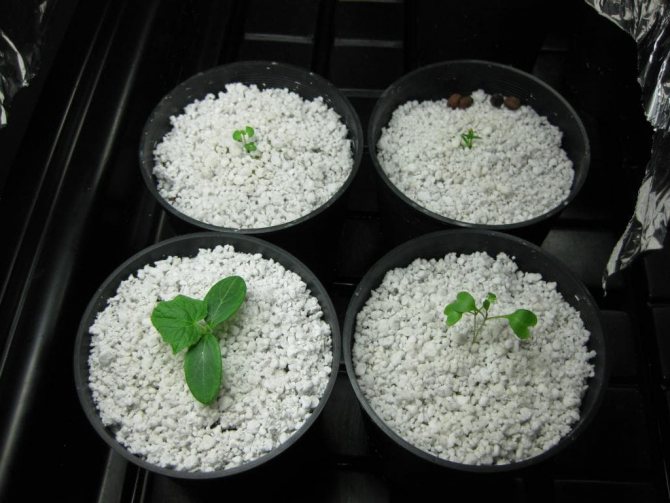

Growers use agroperlite for the following purposes:
- Rooting cuttings and germinating seeds. Seedlings, when grown in agroperlite, are less likely to suffer from fungal diseases, and cuttings rooted in moist perlite do not rot. It is important to take into account that there are no substances useful for plants in the breed itself. They need to be watered with aqueous solutions of complex fertilizers, and to create the necessary microflora, bacterial preparations should be introduced into the substrate. In both, Ca should not be present, otherwise the neutral pH of the agroperlite reaction will turn into alkaline.
- As a component of the planting mixture. To improve the quality characteristics, the substrate is mixed with mineral chips in a 60/40 ratio. This significantly improves the aeration of the soil, prevents clogging and caking, and does not form a crust on the soil surface. And since perlite has thermal insulation properties, it protects plant roots from temperature extremes: they do not overcool or overheat. The moisture content of the additive is also important. One kilogram of perlite absorbs up to four liters of water, along with the beneficial substances it contains, and gradually gives them to the plant. As a result, the number of irrigations decreases and their quality increases: fertilizers are not washed out, moisture losses from drainage and evaporation are reduced, plant roots do not rot from overflow and stagnation of moisture, the soil is moistened evenly.
- Even seed distribution during sowing. For this purpose, use a fine fraction of perlite, mixing it with the seed. After sowing, soil is sprinkled on it, thereby protecting it from drying out and waterlogging. Since volcanic glass partially transmits light, it is allowed to sprinkle it even on seeds with increased photosensitivity.
- Increase of air humidity in the room. In the heating season or in extreme heat, agroperlite of large fractions soaked in water is laid out on plates or trays near indoor plants. This gives a longer lasting effect than spraying, as water evaporates from its surface slowly and gradually.
- Hydroponics. When growing plants hydroponically on nutrient aqueous solutions, agroperlite is used both independently and in a mixture with any substrate. Whether it can be used independently is determined based on the characteristics of the culture grown and the quality of the water (it should not be hard).
- Drainage. Agroperlite of large fractions is used as a drainage layer at the bottom of a flower pot or any other planting container. For this purpose, you can take it both in pure form and in a mixture with expanded clay in a 50/50 ratio.
- Mulching. It is also better to use coarse crumbs as mulch. It prevents the appearance of a crust on the soil, perfectly protects the soil from the effects of pests, and the roots of plants from drying out and waterlogging. When mulching garden plants per 1 sq. meter is consumed from 5 to 9 liters of mineral fertilizing.
- Storage of planting material. Bulbs, tubers, rhizomes are perfectly preserved in perlite, do not lose their vitality, do not rot, do not germinate prematurely and subsequently give strong shoots. They are placed in boxes, in layers so that they do not touch each other. Each layer is sprinkled with a layer of dry mineral chips 2-7 cm thick, depending on the size of the planting material.


In hydroponic cultivation, agroperlite can be reused up to 20 times. Its structure degrades very slowly, due to which such a substrate practically does not lose its properties.Even coconut fiber and vermiculite cannot be compared with such characteristics with agroperlite.
Advantages and Disadvantages of Using Perlite
Having figured out what perlite is for plants, it is worthwhile to dwell in more detail on the advantages of this breed and the disadvantages that it also has. Let's start with the merits:
- Perlite is a biologically pure substance, thanks to which it is possible to effectively fight diseases and pests of plants that winter in the soil.
- Perlite is indispensable in cases where the soil in the garden is too dense, and plants with a weak root system cannot grow on it.
- Perlite is able to accumulate moisture and feed plants with it for a long time.
- Perlite does not cake, which means that even after a long period of time, it is not able to reduce the water and air permeability of the soil.
- Perlite provides good thermal insulation.
Did you know? Perlite can be used not only for growing plants, but also for preserving the resulting harvest. If it is also treated with fungicides, it will be possible to avoid not only freezing of fruits and vegetables, but also to protect them from rotting. However, in order to achieve this result, it is recommended to lay a layer of perlite of at least 5 cm between the layers of fruits.However, when using perlite, you will have to face such disadvantages:
- Perlite is poorly distributed on the market, and the cost of this breed is quite high. It is for this reason that he won love only among flower growers, while gardeners and gardeners are trying to resort to cheaper analogues of perlite.
- Perlite is pH neutral. Therefore, with its intensive use, the level of soil acidity can increase, which is undesirable for most garden and indoor plants.
Considering all the disadvantages of perlite, you can use its analogs, which sometimes can even be free. We are talking about expanded clay, brick chips, sand and vermiculite. However, keep in mind that each of the listed analogs also has its drawbacks.
We hope that the question of why perlite is added to the soil has become completely clear for you? and now you can fix all the imperfections in the soil in your garden. However, keep in mind that the use of perlite in gardening is not always rational and in some cases can have negative consequences.
Benefits for plants
Perlite has a high ability to retain its shape, without caking or compaction during storage, therefore it is ideal for loosening the soil and increasing its water and air permeability.
Amateur flower growers are wondering how to use perlite for plants, especially indoor plants. For example, you can use vermiculite for violets. Its use gives a high growth rate of plants and provokes their increased flowering. It is poured into the bottom of the pots, where it acts as a drainage system.
Agroperlite is actively used on football fields, as well as on golf courses. It is placed in the soil before sowing the lawn.
Insulation features
Insulation can be laid in different ways, it all depends on the type of material. If you need to fill it up, then you should do it right from the bag. In this case, a convenient interval must be observed. You need to check the material to make sure it is dry. If there are cracks or holes in the walls, then they need to be repaired so that the perlite does not spill out.
Cavities in the wall, which are located under windows and doorways, are subject to insulation. If necessary, the material is rammed. Insulation is also required between the exterior masonry and the interior trim.
Main advantages
Perlite, like any other material, has its pros and cons. But despite the shortcomings, it is an integral part of any construction.
The following advantages of perlite as insulation can be distinguished:
- Lightness that allows it to be placed inside any frame structure without increasing its strength.
- Resistance to rather sharp temperature changes allows it to be used for outdoor use in various weather conditions. It can withstand from -220 to +900 ℃.
- Environmental safety, no toxicity in any operating conditions.
- It is not an allergen for the animal world, people.
- Resistant to most acidic and alkaline compounds.
- Not subject to corrosive processes.
- Due to the density formed between the particles of the material during the laying of the layers, a high level of sound insulation of the entire structure is achieved. Therefore, it is not necessary to use an additional insulation layer of a different origin.
- Absolutely not subject to deformation from the effects of high temperatures at the household level Ideal for installing indoor underfloor heating systems.
- Average price range in comparison with materials used for similar works.
- It has high efficiency, is rational and ergonomic in its application.
It would be appropriate to note the inexpediency of using perlite in rooms with constantly high humidity of more than 10% or in conditions of a stably humid climate. It is not resistant to these influences.
When working with this material, one must be aware that aluminosilicate dust is emitted during active actions with it. Very small particles of it can harm the human body by getting on the mucous membrane. Therefore, in the process of mechanically sawing blocks, mixing the solution, precautions must be taken and exposed areas of the body must be protected.
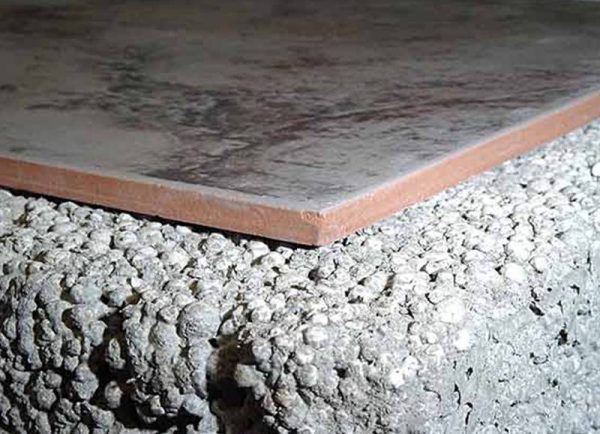

Perlite insulation
Practical use
- To germinate seeds, you do not need to abundantly saturate the perlite with water. At least he shouldn't swim in it. It is enough to add 2-3 parts of water to one volume of perlite, and it, absorbed into the pores, will maintain the moisture among the seeds for a long time, necessary for germination. After the emergence of seedlings, the root system is already so developed that it allows you to immediately plant the germinated seedlings in open ground in a place of constant growth.
- Heavy clay soils tend to cake and compact, especially when exposed to rain and melt water. Introducing fine and medium-dispersed perlite into it instead of sand will significantly improve aeration and moisture exchange in it. And since perlite has a neutral acid-base reaction, it will reduce its acidity in such soils by diluting it with itself.
- It will not allow heavy and dense soil to swamp as a result of rain or flood, and moisture-loving weeds and moss on soil enriched with perlite will not take root.
- Freezing of roots is prevented not only during early spring planting of seedlings, but also during wintering of perennials. Although, of course, the reduced thermal conductivity of perlite does not completely exclude the use of covering materials in the garden or vegetable garden (roofing material, pine bark, dense black polyethylene, etc.).
- Acceptable terms of use: even in conditions of intensive annual digging of land on the site, the complete destruction of the 5-millimeter fraction will not occur earlier than in the 4th year.
- The cost of the purchased perlite is such that a couple of standard bags with a volume of 50 kg of sugar will not break a hole in the family budget, and using it as a substrate for storing onions, potatoes, and garlic will save significant amounts due to the safety of the fruits of the garden. Antiseptic properties are well known, but if, in addition, before laying vegetables for the winter with perlite, treat it by spraying with a fungicide, the safety of the crop will be almost 100 percent.
- In addition to meliorating, sorbing and mulching properties, perlite, due to its microporous structure, serves as a repository of agrochemistry used to protect against pests, fungi, and pathogenic bacteria.Its fine-grained forms are also used as an additive for loose mineral fertilizers, preventing their caking.
- Perlite, nourished in a certain percentage, serves as an ideal medium for long and long-distance transportation of packed bundles of cuttings and tubers of vegetable or flower crops.
- Prevents chemical root burn. This is due to the gradual release of minerals dissolved in the water.
- In indoor conditions, placing trays of water-saturated perlite around the plant pots will give gradual moisture release, which cannot be achieved by simple spraying.
- The very method of producing artificial perlite from raw materials using high-temperature processing assumes the sterility and biological safety of the material. This is especially important when breeding elite varieties of some garden crops.
- It does not allow layers with different density to form in the soil, with the so-called "hydraulic cushions", which contribute to the stagnation of water on the site.
- Completely eliminates the appearance of rot during rooting of plants.


Scope of application
Due to the presence of high physical and technological properties, perlite insulation finds its wide application in all kinds of industries:
- energy;
- medical;
- metallurgical;
- food;
- oil refining;
- construction;
- agricultural;
The distribution of this material into fractions indicates the place of direct use of each of the subspecies.
Here are examples of the more common ones:
- filter perlite has a size from 0 to 0.16 mm;
- construction perlite varies from 0.16 to 1.25 mm.;
- agroperlite has a fraction of 1.25-5mm.
How to choose the best remedy
Both products are successfully used in plant growing and horticulture. Before you make a choice in favor of one of them, you will learn little about the differences, it is important to understand their properties, the impact on the further development of plant cultures. When choosing, it is necessary to take into account the peculiarities of growing various crops, soil composition.
The main recommendations when choosing include:
- when used on large areas with watering and regular fertilization, agroperlite is suitable;
- in indoor floriculture, when growing tub, potted crops, it is advisable to give preference to vermiculite.
What can be replaced
Brick chips. They only use crumbs of non-white silicate and non-brown ceramic, namely red (orange) bricks, as the least alkaline in chemical composition. In extreme cases, such a filler can be acidified - if an alkaline medium is contraindicated for plants rooted on brick chips.
Vermiculite, a derivative of annealed black micas. It is less prone to caking perlite and does not release the water absorbed into it so quickly.
Expanded clay. Just like brick chips, it has an alkaline reaction. But its main drawback is its high thermal conductivity, it quickly heats up, giving off the stored heat to the environment (and to the ground as well) and cools down. Therefore, it cannot be a heat-insulating material if this function is important for a gardener.
Crushed polystyrene, sand (should not be small river, but large, with a fraction of at least 2 mm). The main disadvantage of such fillers is that they do not retain moisture and fertilizers at all, which freely penetrate through them and go into the lower layers of the soil.


An effective type of backfill insulation, theory and practice of our craftsmen
The variety of thermal insulation materials on the market makes it possible for each self-builder to choose the best option for himself. Along with such common insulators as stone wool and polystyrene derivatives, backfill insulation is also actively used.But if expanded clay is used everywhere, then perlite is not so in demand, although it is not inferior to it in terms of heat saving parameters and is characterized by a wide range of applications. But perlite has already been tested in construction by the craftsmen of the FORUMHOUSE portal.
Production technology
At present, the technology of 2-stage heat treatment is widely and rather successfully used, due to which expanded perlite sand with a bulk density of no more than 150 kg / m3 is obtained. The resulting raw material has a predominantly closed type of grain porosity.
Manufacturing is carried out in a shaft furnace, which entails the following advantages of this technology:
- Increasing the technological capabilities of perlite sand;
- Getting several types of porous structures on the same production line. So, it is possible to obtain perlite with an open and closed porous type, which minimizes water absorption and increases strength;
Expanded Perlite Sand Production Scheme
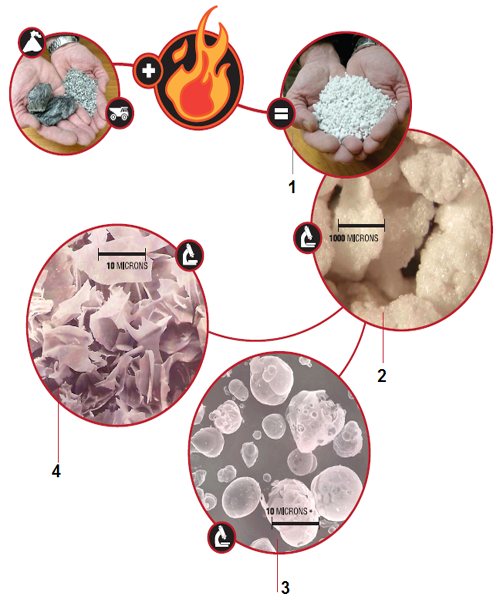

Safety when working with the substance
Given the ability of the substance to form a dust cloud, when working with it, you should follow the safety recommendations:
- before starting work, it is advisable to slightly moisten with water from a sprayer;
- when opening the package, protect the respiratory tract with a respirator, gauze bandage, cloth;
- wear goggles, a mask;
- rinsing through a sieve with small holes;
- in case of contact with mucous membranes, into the respiratory tract, abundant rinsing with running water is required.
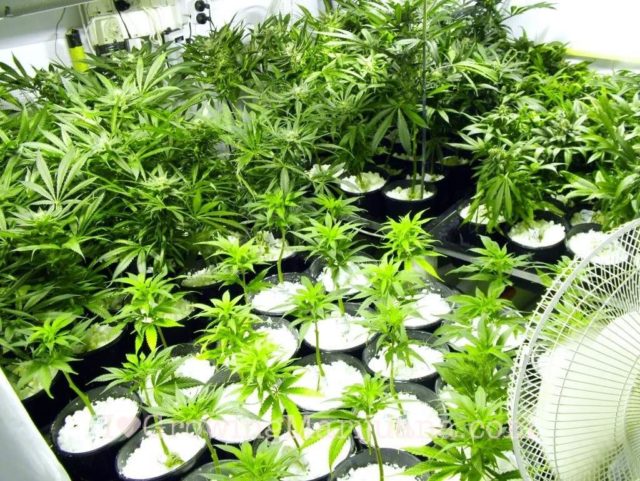

Perlite is also used as mulch.
Characteristics, composition and properties
Perlite
Perlite is a sour glass of volcanic origin. It has a consonant name with pearls, looks like gravel or coarse sand, has a white - gray color scheme. Untreated rock is of little value. Perlite has signs of shell-concentric stratification, which leads to its further disintegration into small parts of rounded outlines. It differs from other rocks by its high porosity, the presence of liquid inclusions in the structure. Applied based on fractional sizes. The largest faction has found application in construction and landscape design.


Perlite is of volcanic origin
Agroperlita
In its composition, the rock contains water, which, when suddenly heated to 1000 degrees Celsius, expands and breaks the pores in which it is located. Through this, the rock swells, breaking up into porous spherical small parts.
The material has the ability to improve the quality of soil mixtures, increase their hygroscopicity, aeration. The coarse fraction of expanded perlite has found application as mulch, the smaller ones are suitable for improving the properties of soil mixtures, increasing their hygroscopicity, and friability. Prevents the development of putrefactive processes.
Vermiculite
Vermiculite is a mica with liquid inclusions, which, when suddenly heated, turns into a layered granular material. It is classified as an inert mineral. Possesses a high degree of absorption, moisture retention, exceeding its own size and weight by more than 3.5 times. This feature has been used in crop production.
By retaining water and preserving nutrients from leaching, it contributes to better replenishment of the needs of plant organisms. It is considered the optimal moisture-saving additive to the planting soil. Helps to retain moisture for a long time. Not suitable for fat women, cacti.
User reviews
I bought a bag of perlite 50 l, it perfectly absorbs water (40 l) in a dry state, weighs no more than 4 kg. The following composition was poured into brick walls: expanded clay, perlite, cement. Added specifically as insulation. My family and I were satisfied.
Kostenko Maxim
I buy agroperlite in flower shops, use it when transplanting plants in the form of an additive to store soil. It can absorb moisture up to 400% of its weight, loosens the soil well, protects plants from drying out and waterlogging, and has no effect on fertilizers. I use it for about six months, the plants began to look much better and bloom more often.
Alevtina Grigorieva
I have been using vermiculite for more than one year, using it outdoors in the country. I plant seedlings in it. It helps to protect plants from insect infestations. Harmless, while it can replace many frequent watering. Prevents roots and soil from drying out in our dry climate. I don’t know if I would have done the necessary element without him.
Irina Sklyarova
Features of the
Perlite is a versatile and useful material used in various fields. It can be white, light and cream, therefore it is not entirely appropriate in the agricultural sector, but it is perfect as a heater or a binder in building mixtures.
Particles of agro-material can cause unpleasant consequences if they get into the eyes or mouth. Therefore, it is required to wear protective goggles and a respirator. Rinse preferably through a fine sieve. Wetting from a spray bottle is required. Volcanic glass has no expiration date.
Roof insulation
The use of expanded perlite is not limited to wall insulation, as the roof also needs additional thermal insulation. For these purposes, a fraction of the material is used, similar to that needed for wall insulation. For thermal insulation, perlite must be poured between the sheathing and the roof lathing, periodically tapping for better compaction of the material.
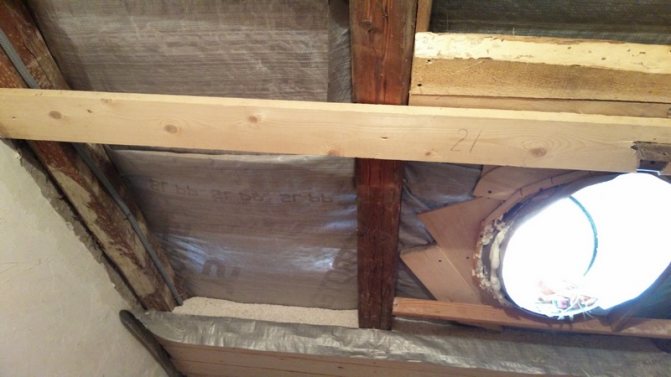

Bituminous perlite is often used, i.e. mixed with bitumen. It has a sticky and durable structure. The advantage is the fact that the laying of bituminized perlite does not require heat treatment and hardens on its own. However, for beginners it is more convenient to use ordinary bulk material, since it is more convenient to distribute it without some skills.
Varieties of perlite insulation
The specified wall insulation is produced in different forms and their characteristics are somewhat different.
Backfill insulation
Perlite sand for wall insulation is the lightest. Thanks to him, you can lighten any design. Material is used for arranging interlayers between floors, filling cracks and other voids. With this form of insulation, you can adjust the floor to the required level, plaster the walls. The material reduces heat loss by 40%.
Perlite in the form of slabs
The plate form of insulation is produced more often than others, since it is convenient to use, it makes it possible to quickly carry out installation work. The material is hygroscopic, so you should not use it for outdoor work. If such a need arose, then a waterproofing layer is required. The production of slabs involves hydraulic pressing of raw materials. The material contains other components that improve technical characteristics: cement, polymer substances, lime, liquid glass, bitumen.
Roofing models
Perlite as insulation is used to insulate roofing systems. The binder in the product is bitumen. Its characteristic feature is increased flexibility, as a result of which structures of any shape and type of complexity can be isolated. In addition to thermal insulation properties, the material provides reliable protection of the roofing system from fire.
To fix the product, it does not require preheating, as is the case with other bitumen-containing products. The low coefficient of thermal conductivity will allow the use of insulation in the northern regions.
Dry construction mixtures based on perlite
There is a possibility not only of wall insulation with perlite, but also the use of material for the manufacture of building mixtures. In this case, fine-grained raw materials with the addition of cement are required. The mixture must be diluted with a sufficient amount of water. The mortar is intended for grouting cracks and joints. Raw materials are added to plasters to achieve a thermal insulation effect. Perlite is added not only to cement, but also to gypsum and lime compositions.
Perlite-based plaster is resistant to fire, does not weigh down walls, does not rot and is inert to the effects of negative temperatures. The product has good adhesion to the surface. The finish provides high-quality sound insulation and helps to retain heat in the room.
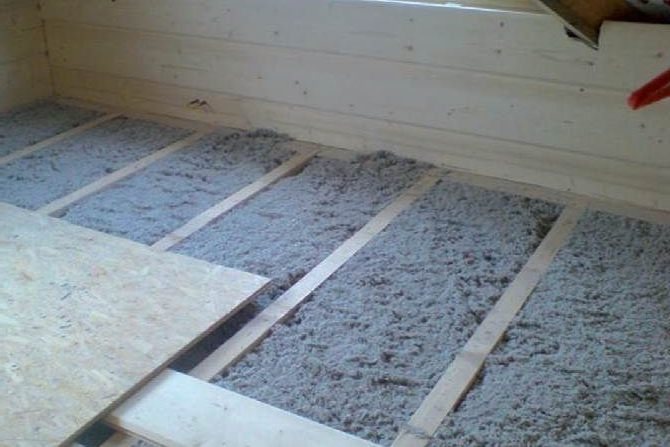

Pros and cons of modern material
The positive qualities of the latest materials in agricultural technology include:
- biological sterility, purity of materials;
- the ability to absorb, retain and slowly release moisture;
- the ability to replace sand for growing and rooting crops with a weakened root system;
- improve hygroscopicity, aeration of soil mixtures;
- preventing the formation of a dense crust on the surface of the soil after irrigation;
- the ability, due to low thermal conductivity, to protect the roots from hypothermia, overheating;
- prevention of the development of putrefactive processes, soil acidification.
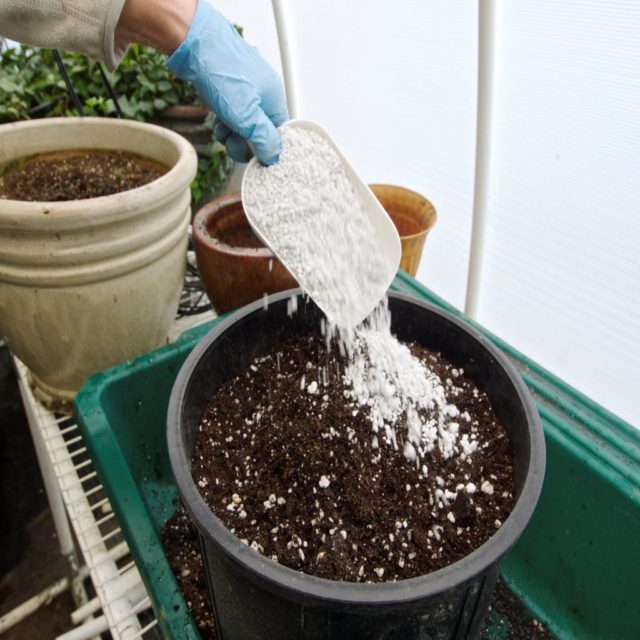

Perlite improves the hygroscopicity of soil mixtures
The disadvantages include:
- given the neutral reaction, they are able to reduce the acidity of the soil in favor of saturation with alkali;
- masking effect of insect larvae - pests;
- the inability to use for drought-resistant crops (cacti, bastards).
Thermal insulation of walls
For wall insulation, perlite sand with a fraction of about 6 mm, previously dedusted, is used. It must be placed between brickwork. The process can be carried out both manually and using a sandblasting machine. When laying, it is necessary to periodically tap the wall in order to compact the expanded perlite. The thickness of the insulating pad is usually about 5-10 cm. This is enough to keep the heat in the house.


Swollen
Expanded perlite - what is it? It is a natural substance that is fired at high temperatures in special ovens. Due to the impact of the temperature of 850-1250 degrees on the rock, it swells and opens. Depending on the size, this type of perlite is granular or crushed stone-like. Another name is agroperlite, since it is used by farmers.
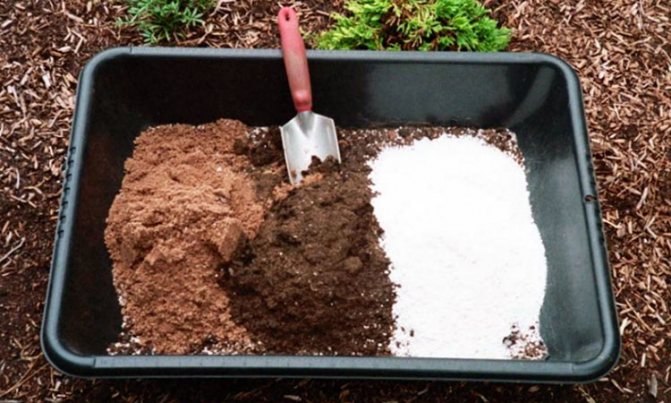

This breed:
- durable;
- fire resistant (up to 900 degrees);
- heat insulating;
- soundproof;
- has good absorbency;
- has biological resistance;
- environmentally friendly and sterile.
Often this breed is used for seedlings that need a lot of moisture, while it is sensitive to temperature extremes. But still, it is most in demand in floriculture, since it serves as a drainage system, protects the top of the soil in a pot from drying out. This is ensured by the ability to accumulate moisture, which is given to the soil. A photo of perlite is presented in the article.



